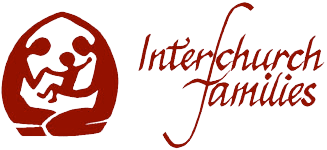555-555-5555
mymail@mailservice.com
Fourth Meeting of French-speaking Interchurch Families
Fourth meeting of French-speaking Interchurch Families, 22-23 May 2004
The fourth meeting of the foyers mixtes francophones took place in Alsace at Rimlishof, a conference centre near Buhl, a few miles from Mulhouse, in the beautiful setting of the Vosges mountains and forests. About a hundred adults were there, and lots of children. It was the fourth in a series which had brought French-speaking foyers mixtes together from all parts of France, as well as from French-speaking Switzerland and further afield (Versailles 1995, Lyon 1997 and le Rocheton, Melun, near Paris in 2000).
A French association
The Rimlishof meeting was important in the development of the interchurch family movement in France. Separate groups of foyers mixtes have met in different parts of France since the early 1960s, linked together through the work of Fr René Beaupère and the Centre St Irénée at Lyon. Indeed, there was a fascinating exhibition of ‘50 years of interchurch families in Alsace’ displayed on one of the walls of the meeting room. There have been links with French-speaking Switzerland, too, from the 1960s. In 1998, following the First World Gathering of Interchurch Families in Geneva, a comité francophone permanent was formed to draw them together, so that they could speak with a common voice in the preparation of another World Gathering. Following the Second World Gathering in Rome in 2003, it was decided to form an official French-speaking association or associations. This was done in Switzerland in late 2003, with the establishment of the Association de Foyers Interconfessionals de Suisse (AFI-CH). A question at Rimlishof, therefore, was whether the French should form a national association.
The Saturday evening discussion on this left no doubt that there was a will to establish such a body. The debate centred on how the traditional link with the Centre St Irénée would be preserved while giving full powers to an elected committee, and constitutional questions such as whether a couple should have one vote, or the partners one each. (I remember an animated discussion on this when the English Association of Interchurch Families was agreeing a constitution!) By the end of the evening a committee had been elected and the Association Française des Foyers Mixtes Interconfessionels Chrétiens (AFFMIC) had been established.
Unity and diversity
The theme of the meeting was ‘Spreading the Word with two voices’, so we wrestled with the relationship between the one Word and the plurality of voices in the churches, from an interchurch family perspective. We were helped by a Benedictine priest, Fr Paul Aymard, who used to belong to the well-known ecumenical Groupe des Dombes, and by Pastor Michel Bertrand. Both introduced the theme, and also responded at the end to what had been said in plenary and the workshops.
Here I will simply pick out some of the questions and challenges that Pastor Bertrand left us with. He said he had observed both the suffering and also the joy and gratitude of interchurch families. He saw that so much depended on particular people – this pastor, that priest. This is a mystery of the Incarnation, in which we can rejoice; Christ is incarnate in persons, who operate not just at the cerebral level, but with their emotions. We must meet others at a deep level, where they are. He had heard appreciation for diversity, but also nostalgia for a lost unity. Yet an undivided church has never really existed; diversity has always led to controversy even in New Testament times and the early centuries. He had heard generalisations about the churches as institutions. Don’t generalise! he said, analyse, understand. The institution is necessary to organise the debate, to make it possible for us to live together in space and time; what is so negative about that? Clarify the difference between the church as the Body of Christ and the church as institution. We are the church, not over against the churches. How do you live diversity as a couple? Being a couple is not your only identity; you are a man, a woman, a citizen, you can have different views on important matters (didn’t you want the constitution to allow you to vote as separate persons, not just as a couple?).
But we have to find a way for diversities to be for the benefit and enrichment of all, at the service of all. You have to learn to be free Christians (it’s no good asking for authorisations that can’t be given) who are deeply concerned for the unity of the church. You haven’t a monopoly of ecumenism – but you can make some of the important questions be heard more loudly. And don’t forget the priority of mission; we are servants of the Word, simply preparing the way for Another to come and find his place in us and in others.
The Mulhouse group had done a splendid job in preparing the meeting. The programme ran smoothly, the children were happy in their groups, and frequently brought us all prayer cards to use for grace and prayer together. They made a great contribution to the Sunday worship that took place up the valley at the ancient Abbey of Murbach. It was a service full of symbolism: the breath of Pentecost, weaving, colours, reading, singing, sharing food.
Finally, it was agreed that the Lyon group of foyers mixtes would be responsible for hosting the next meeting of the French Association, probably in two years’ time.
Ruth Reardon
Contact Us
3rd Floor,
20 King Street,
London,
EC2V 8EG.
Contact Us
Telephone: +44 (0)20 3384 2947
Email: info@interchurchfamilies.org.uk
Registered Charity No. 283811

